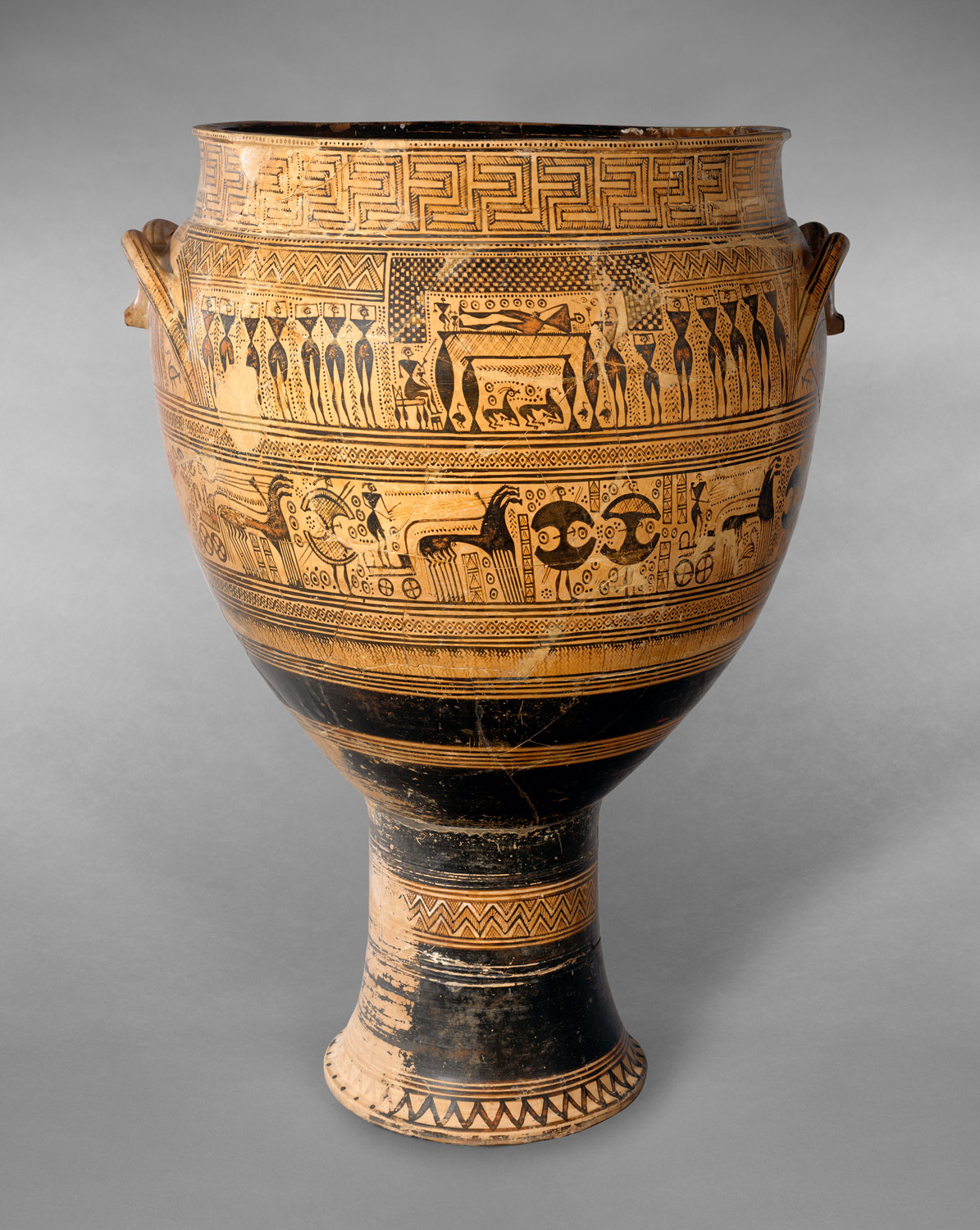
This krater was a typical Egyptian grave marker. The outside is covered in funerary art aimed at the emotions of the survivors, and not as much the afterlife of the dead, as was done in Egyptian art. The paintings depict funerary rituals in which the deceased is shown about to be cremated (a new practice at the time) and others look on in distress at the loss of the loved one.
This ceramic krater represents the art of the geometric period in Greece. The Greeks still shared some Persian culture, and this showed with the Persian-like decorations on this krater. It fits into the geometric period because many of the subjects are painted using geometric shapes, instead of trying to make a representational painting. I think this artists and sculptor had a feel for the formal elements in art, even if they didn't know it. The dark and light of the painting is evenly balanced, and the darker being on the skinnier part really works well. The person who actually made the krater also did well in the shape of it because it really does fill its space well and doesn't look awkward.

No comments:
Post a Comment